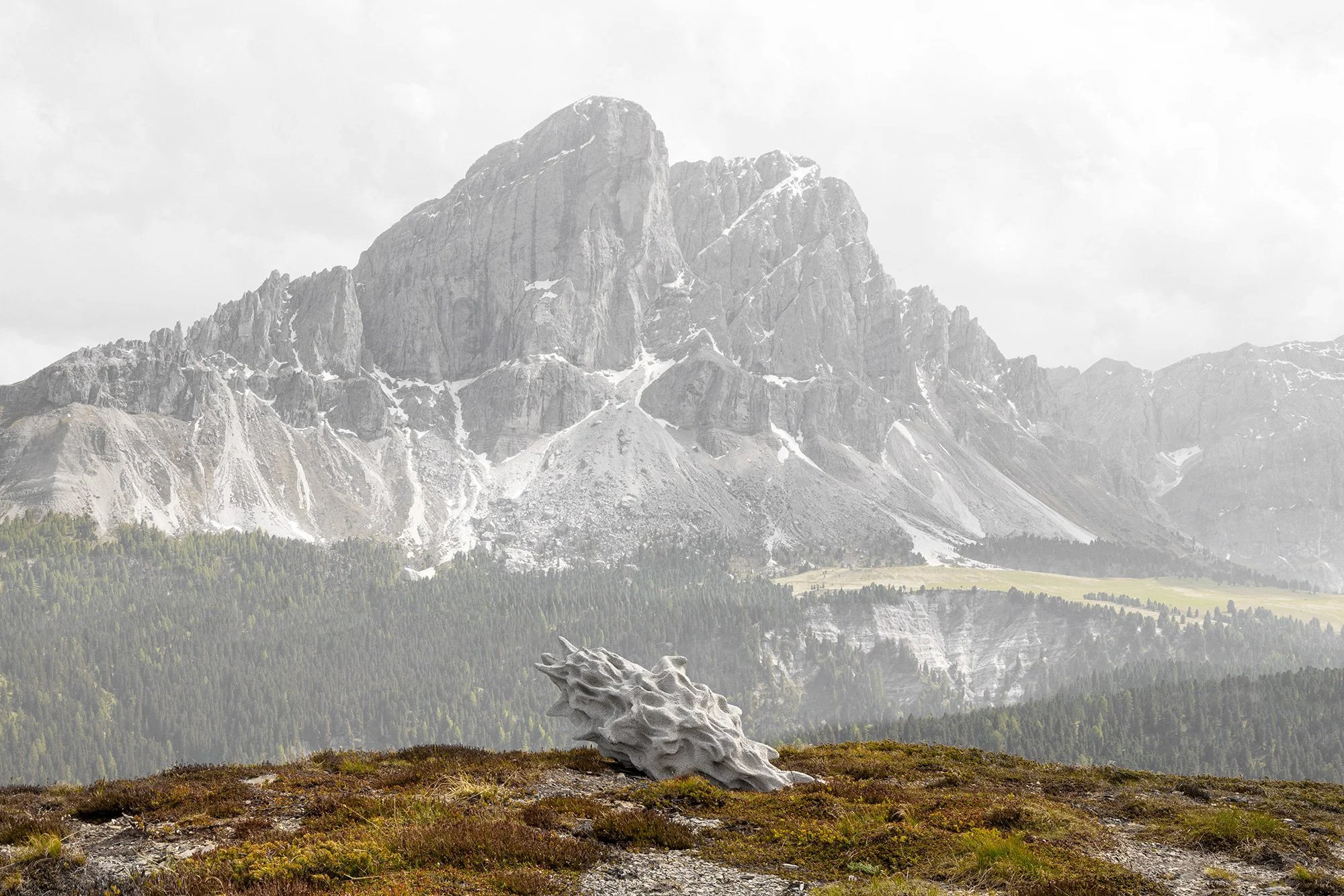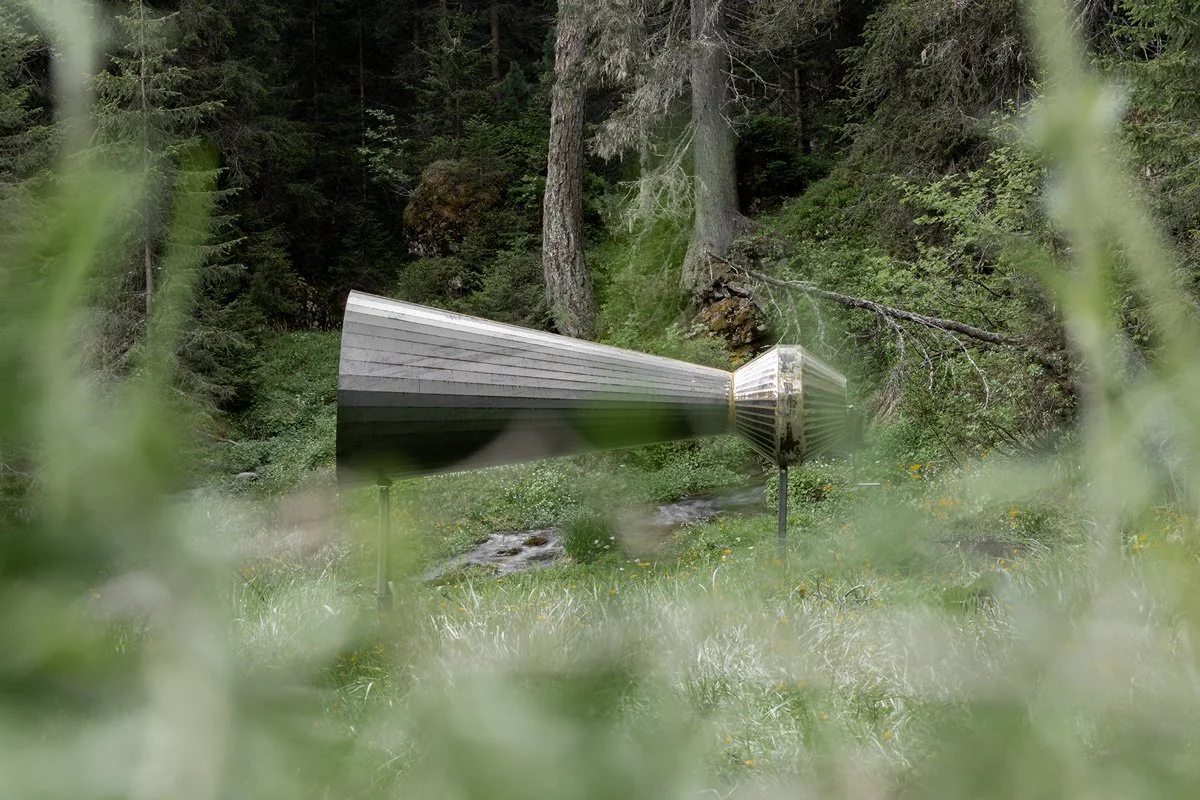Morph Module
Elias Jocher
The sculpture emerges from the ground like a strange fragment from a distant past or future. It appears as an unusual archaeological find whose pseudo-natural form was clearly man-made with the aid of technology—specifically, a 3D concrete printer. The machine’s operation, which lays down layers upon layers of material, recalls the sedimentary formation of Dolomitic rocks, born from the superposition of sands and organic sediments (shells, corals, algae) that later solidified into limestone. However, “Morph Module” contradicts the unpredictability of nature by proposing, as its title suggests, forms that can be replicated in identical modules. Through its ambiguous formal language, the work oscillates between organic and mechanical aesthetics, inviting reflection on the development of tools and technologies—their origins, current uses, and possible future transformations.





Exhibit place Monte Muro
Monte Muro is one of those little-known places, far from the great masses, that offer a truly unique panorama. From the altitude of 2,332 metres of the barren grassy peak, the gaze sweeps from Sass de Putia to the Odle di Eores, from Conturines to the Plose, and on to Val Badia, the Alpe di Luson and the mountains of Val Pusteria. Monte Muro also marks the border between the municipalities of Luson, San Martino, and Marebbe and is, again, the meeting point of the Ladin and German languages. Focusing on the linguistic theme, the term ladin originates from LATINUS ‘Latin’. Following the annexation of the Alpine regions to the Roman Empire (15 B.C.), the local populations adopted Vulgar Latin, without completely renouncing their own language, which was influenced in its structure and vocabulary by the non-Romance languages, Celtic and Rhaetian. There are still place names and names with this origin today, for example: barantl – stone pine; dascia – branches of pine trees; roa – landslide; crëp – mountain; aisciöda – spring; nida – buttermilk; liösa – sledge; dlasena – berry.
Near the summit of Monte Muro, one finds the large meadows of Chi Jus, which in summer are used as alpine pastures. This bucolic scenery is made up of sunny pastures, cows, alpine pastures, and the ever-present sound of cowbells, reminding us that for centuries before, and at least until the end of the 19th century, the two main sources of sustenance in Val Badia were livestock farming and agriculture. Until the early 1970s, more than half of the population’s earnings still came from agriculture, which employed over a thousand families (today there are 550). Today, due to tourism and the low profitability of crops, the potato, wheat, and broad bean fields have disappeared. Val Badia was practically self-sufficient for much of its history due to landslides, avalanches, and poor maintenance of the paths and dangerous connections that linked the neighbouring valleys and the main urban and trade centres in the area. The first carriage road did not arrive in Val Badia until 1892. The isolation was, however, seen in retrospect, as providential in maintaining the local language, architecture, customs, and culture. With the advent of tourism in the 20th century, these areas recovered both economically and from the artisan industrie perspective, which today counts almost 600 craft enterprises.












